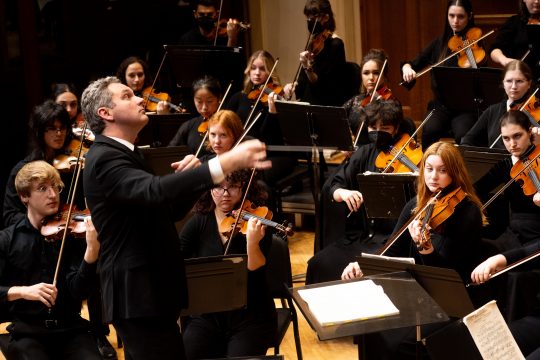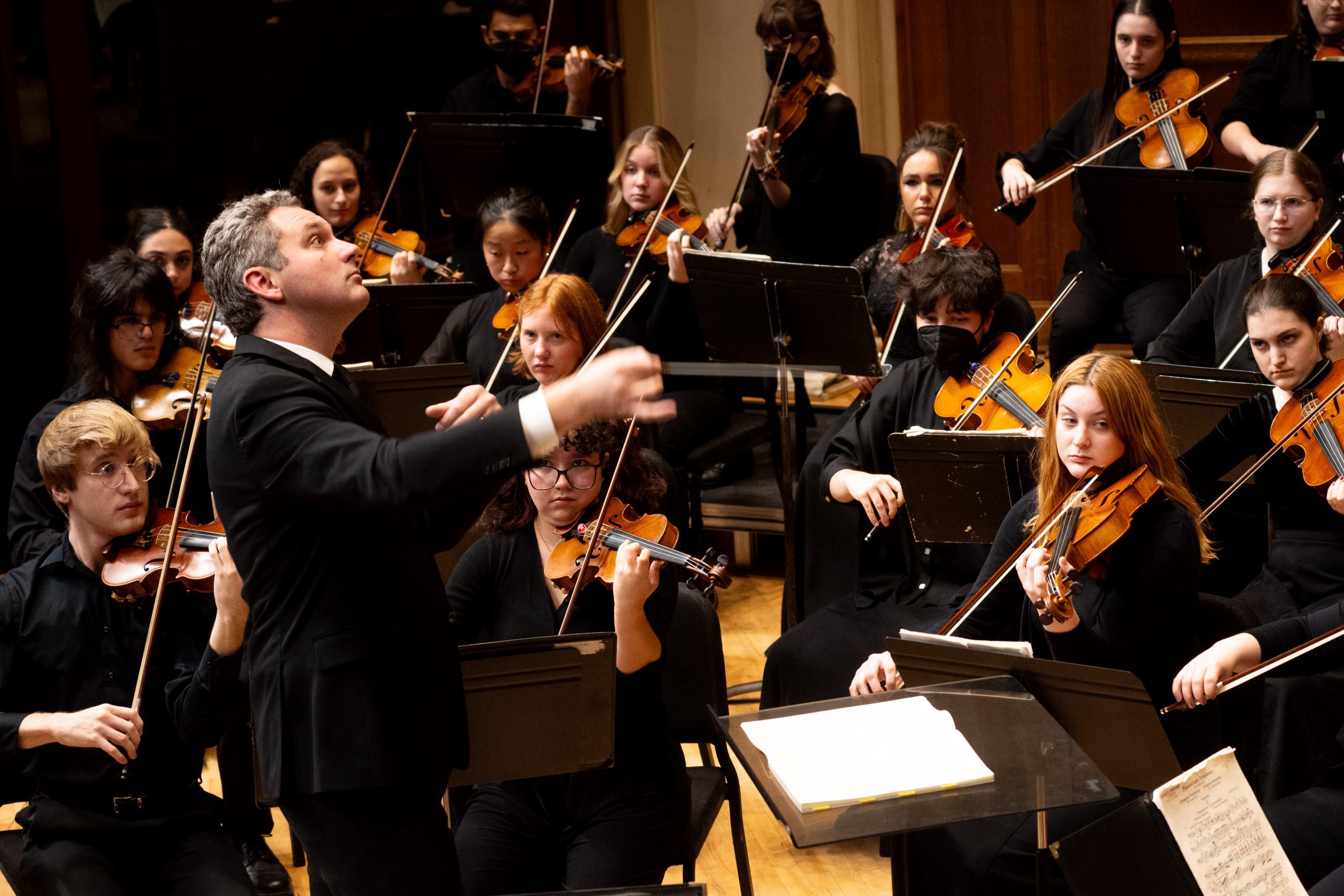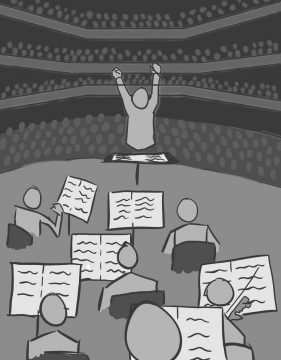The symphonies of Ludwig van Beethoven are among the highest-praised works of Western music. Indeed, their monumental status may intimidate some, but not the Lawrence Symphony Orchestra (LSO), which has worked tirelessly on Beethoven’s Seventh Symphony these past few weeks. This work, alongside Bohuslav Martinů’s Rhapsody-Concerto for viola and orchestra, will be performed next Friday, Nov. 17 at 7:30 p.m. in the Memorial Chapel.
“It’s been a vision for the orchestra program to do at least one Beethoven symphony a year,” said Mark Dupere, Associate Professor of Music and Director of Orchestral Studies. Indeed, LSO performed Beethoven’s Sixth “Pastoral” Symphony last year, and Beethoven’s Eighth is planned for next year.
“We start with big picture: what’s this music about? What are the different movements about?” explained Dupere. The ensemble has a methodical approach to tackling such large works, which includes discussing the big ideas first. Aspects such as character and musical identity are explored first, but the detailed work begins quickly.
To begin, the group typically identifies basic constraints: the number of rehearsals available, the practical difficulties of the work and the individual demands. Dupere provides schedule plans for every week, during which they rehearse as a full group three times. Usually, the ensemble has a handful of weeks; this cycle, they have six.

Six weeks of rehearsals would be a luxurious gift for a professional orchestra. But differences abound: professional musicians have played these symphonies before and are often working with decades of extra experience.
“I have some students who haven’t had any orchestra experience — so this is their first time,” Dupere observed. Many students coming from a high school or youth orchestra are used to entire terms dedicated to a single work.
“It’s impressive,” said third-year violinist Eli Jordan on LSO’s rehearsal timeline. He recalled returning to his hometown and visiting a youth orchestra who had performed the same work as LSO the previous year. “They could not comprehend” that LSO had only five weeks instead of the nearly three times that amount available to them.
Earlier this term, LSO gave a laudable performance of Hector Berlioz’s “Symphonie fantastique,” arguably an even larger and more difficult work to put together. They did so in only four weeks, making this rehearsal process feel comparatively longer.
“This cycle has actually felt more spread out to me,” remarked the concertmaster, third-year Mia Kraker, “since it’s a little longer than the last one and since we’ve had more time to gel as an ensemble.” She continued: “I’ve enjoyed feeling like there’s a little more time to dig into things, and I think the rest of the orchestra has as well, although there’s still lots of things to cover!”
Kraker further explained the process as an attempt to move away from “just ‘learning’ the piece [i.e. playing notes correctly], to actually working on all of the things that help bring the music to life and make it more interesting for the audience.”
In order to explore these large-scale aesthetic choices within the ensemble, individual preparation is a necessity.
“There’s a serious expectation of personal preparation so as to most efficiently utilize group rehearsal time,” explained sophomore trumpet player Joey O’Connor. “You have to figure out what the piece is doing right off the bat, understanding the language of the composer as quickly as you can, otherwise your musical contributions are words and not sentences,” he said.
With the emphasis on rehearsals, Dupere finds the main value in the process, not the final product. Instead, he explained, “It’s about engaging with this music and bringing it to life.”
“To an extent, I’ve done this [approach] before in ensembles before Lawrence,” said O’Connor. “But this is a unique ensemble in the fact that such an emphasis (in a great way) is placed on stylistic integrity and musical expression,” he added.
Alongside the Beethoven, LSO will be joined in Martinů’s Rhapsody-Concerto by Matthew Michelic, Lawrence’s Associate Professor of Music and Teacher of Viola. Michelic, who plans to retire this year, is also among the many Lawrence faculty members who’ve led sectional rehearsals for LSO.
“I personally feel so honored and excited to get to perform with him,” said Kraker. “[I] love the passion, energy, and respect that he brings to rehearsal. I think both of the pieces on the program are full of so much energy and excitement and have so many different characters to play with. I think this concert will be a great way to celebrate all of the awesome work Lawrence has done this term!”


